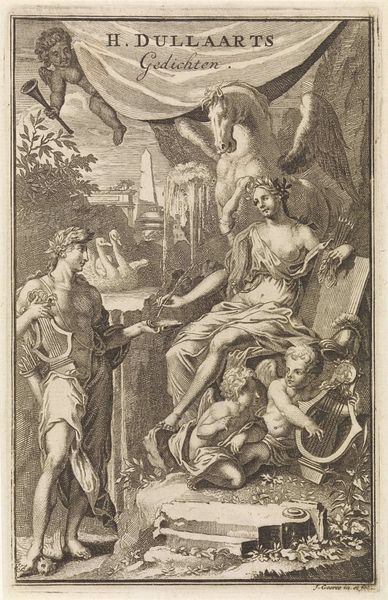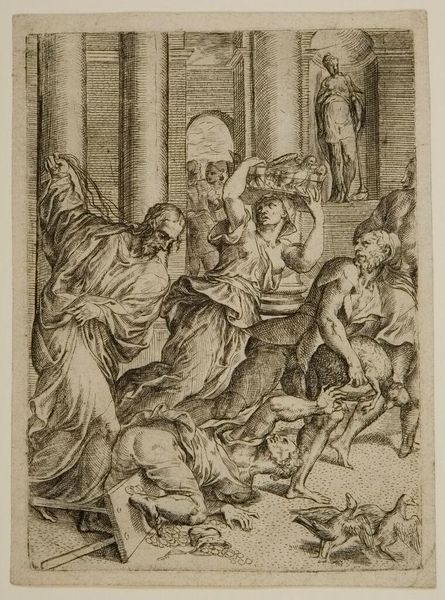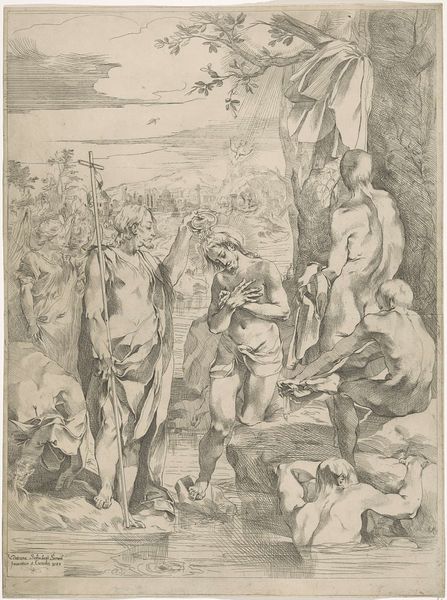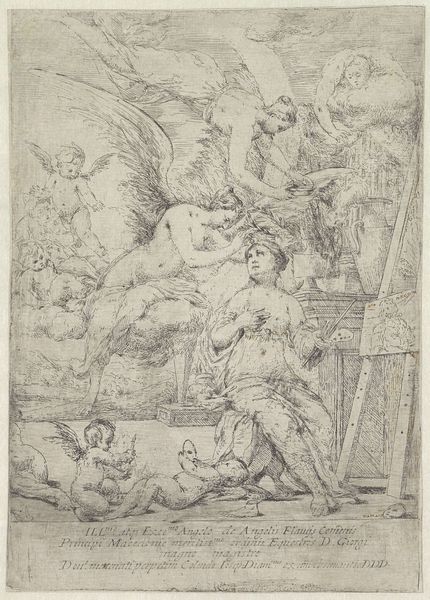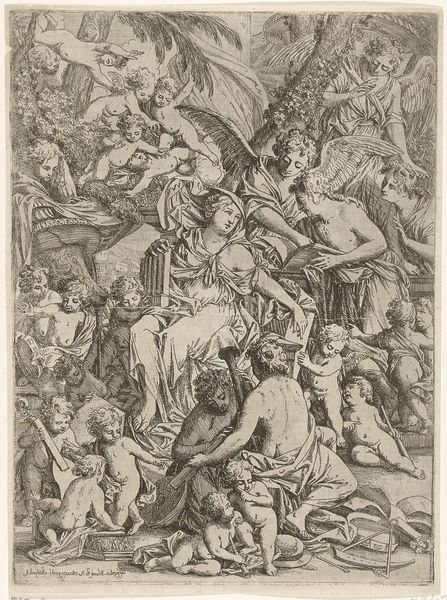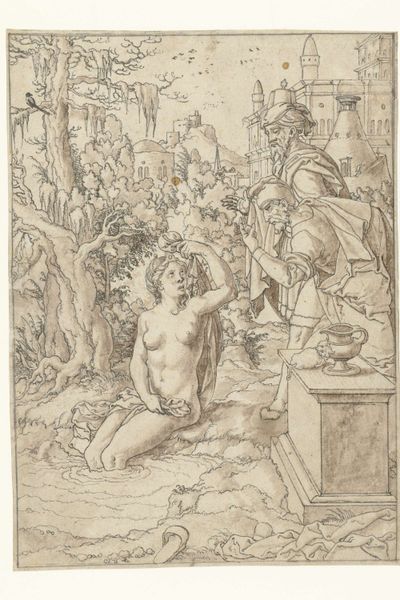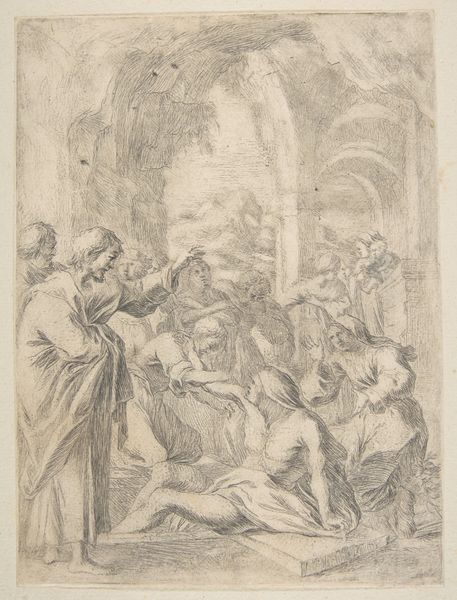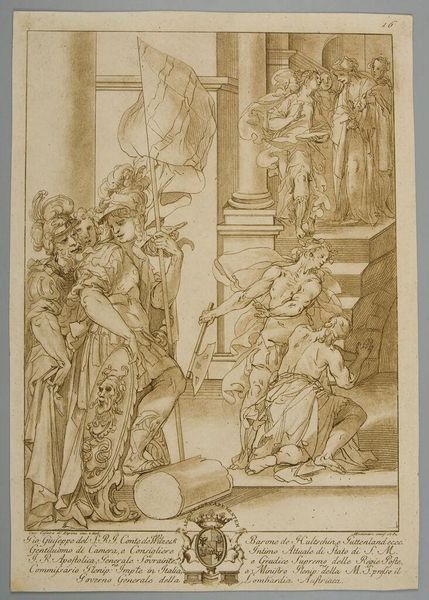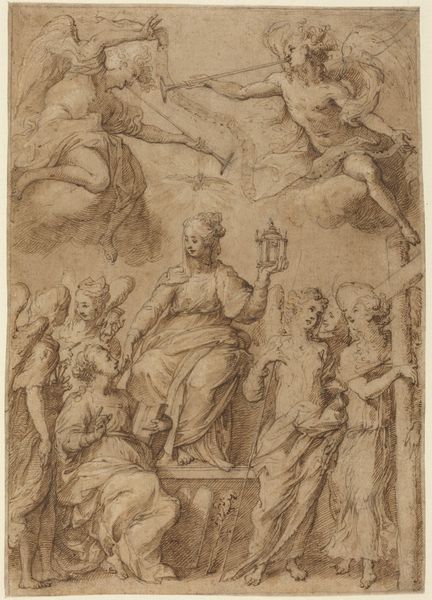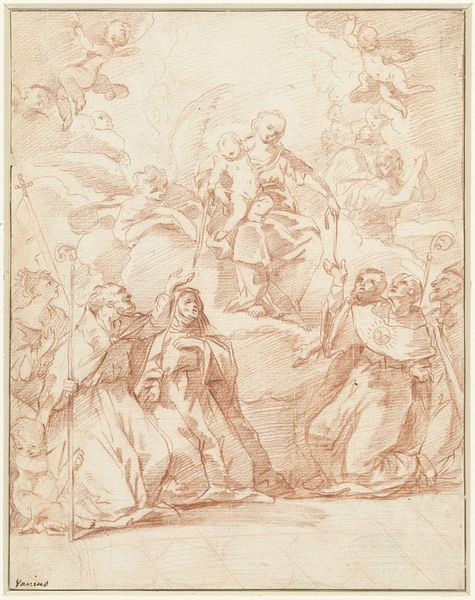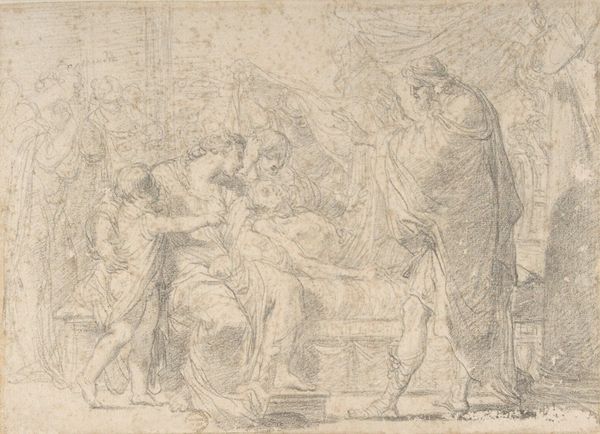
drawing, ink, pen, engraving
#
drawing
#
ink drawing
#
allegory
#
baroque
#
pen drawing
#
pen sketch
#
landscape
#
classical-realism
#
figuration
#
ink
#
pen
#
history-painting
#
engraving
Dimensions: height 380 mm, width 260 mm
Copyright: Rijks Museum: Open Domain
Curator: Welcome. Today, we are exploring Giuseppe Diamantini's engraving, "Allegory with Fame, Hercules, and Europa," likely created between 1631 and 1705. What strikes you initially about this print? Editor: There's an ethereal quality. The lightness of the lines combined with the dramatic positioning of the figures gives it a dreamy, almost feverish feel. Curator: Indeed. Look at the ways Diamantini utilizes ink and line work; he exploits the physical properties of the engraving process itself. Consider the time invested to produce this single print, especially when viewed in light of its status as a reproduction and potential multiple. We’re dealing with a market dependent on reproducible imagery here. Editor: I am struck by the characters chosen, though. Fame bestowing laurels to a seated Hercules, while Europa stands nearby with the bull, almost as if overseeing the hero's recognition. These aren’t random figures; they represent key virtues and stories in the culture. The scene presents a specific and, perhaps even pointed, narrative. Curator: The figures' attire, or lack thereof, signals classical ideals of beauty and heroism but how much does the physical labour required for prints, in multiples and as a vehicle of propaganda, influence its artistic status? The work exists at an intersection of fine art and burgeoning reproductive technologies. Editor: Focusing on symbols, the laurel wreath clearly connects Hercules to victory and honor, reinforcing his legendary status. Fame herself, floating and winged, embodies aspiration and memory. It's interesting how the artist uses universally understood images to communicate deeper messages, layered meanings almost hidden behind the overt display of myth. Curator: Good point. And perhaps Diamantini intended such layers of meaning, but look at the ink itself—what sort of physical and chemical qualities of the used pigments are at play, and can their nature reflect back into a history of production and distribution for similar prints across his practice, or that of his peers? How does the commodification of symbolic imagery become art making itself? Editor: Considering that line of inquiry, the images become like brands or seals of quality that get spread far and wide; the making and disseminating of allegory then speaks to building social power and recognition beyond its mere illustration of a historical event. These historical references give access to ancient knowledge, culture and political strategy. Curator: Fascinating to think about in the context of a growing print market and the increasing availability and exploitation of skilled artisanal labor. It recontextualizes how we define art itself, doesn’t it? Editor: It does. For me, I leave considering how carefully chosen archetypes work across culture and time. Thanks for a perspective on art which encompasses a new focus on production.
Comments
No comments
Be the first to comment and join the conversation on the ultimate creative platform.
